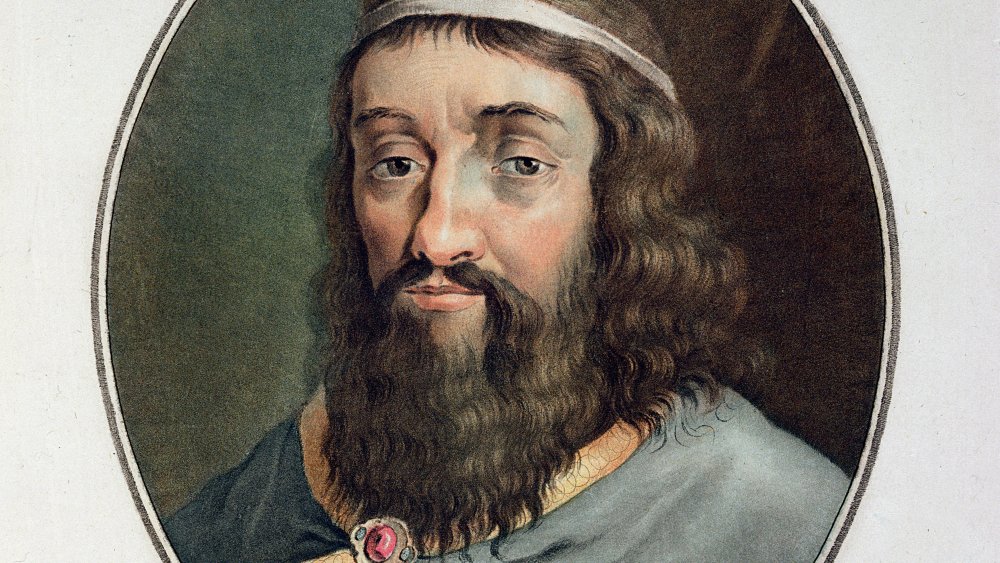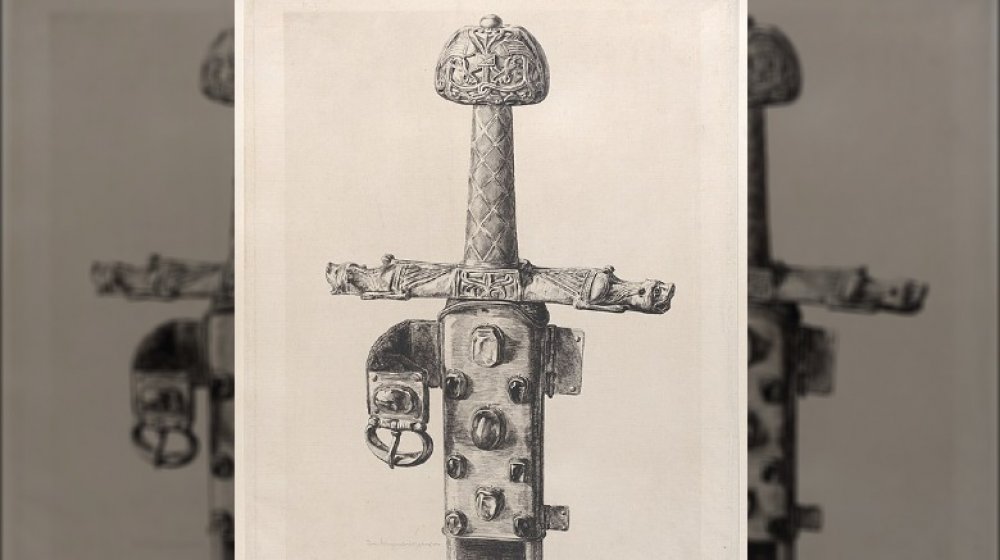The Truth About Charlemagne's Legendary Sword
Every culture has its folklore and mythology, often involving deeds of courage, sometimes also involving the assistance of a magical, mystical weapon. Think of King Arthur's sword, Excalibur, delivered to him by the Lady of the Lake. Thor had Mjölnir, his hammer. The Norse are fun that way: King Magnus III of Norway named his sword "Legbiter." Even in fairly modern times, we hear of Wyatt Earp's long-barreled handgun, the Buntline Special, and General George Patton's customized sidearms (per The New York Times, ivory handled, thank you very much). Before we start on a "boys and their toys" rant, remember that Annie Oakley used custom-built firearms for her sharpshooting performances, according to the Annie Oakley Center Foundation. Back in the 8th Century, you couldn't very well have a rifle fit for a king — but you could have a sword. And you did, if your name was Charlemagne, King of the Franks.
Charlemagne is generally credited with being the first monarch to manage to unite Europe after the fall of Rome, according to Biography. Crowned King of the Franks when he was in his mid-20s, Charlemagne — aka Charles I, aka Charles the Great — led a very military sort of life, not only conquering northern Italy, but also parts of Austria, Hungary, Bavaria — the list goes on and on; hence, his title of "Father of Europe," says The Vintage News. He also sought to convert his subjects to Christianity — one way or another; "convert or die" seems accurate.
The sword has been used to crown kings of France
In all of this, Charlemagne wielded a very special bit of cutlery, named "La Joyeuse" in French, "Joyful" (yes, we recognize the irony; how much blood has it spilled?) in English. The tale is told that it took three years to create, and once finished, could blind one's opponents, protect the bearer from poison, as well as (and this is fun) change color up to 30 times a day.
The sword disappeared from history when Charles died in 814, but pops up again more than 400 years later, when something alleged to be La Joyeuse was used in the coronation ceremony of King Philip the Bold in 1270, says Ancient Origins. The monks of Saint-Denis were entrusted with its safekeeping until 1505 or so. In 1793 La Joyeuse was moved to the Louvre, where it is on display today. If that's really La Joyeuse; analysis shows that the sword in question is a composite of a number of additions, including the grip, which only dates to about the 13th century.
Still, as Ancient Origins points out, the weapon "stands today as a testament to the exceptionally crafted regalia used throughout the centuries. Appearing in the coronations of the Kings of France over the course of hundreds of years has only reinforced its legacy as a symbol of power and authority."

